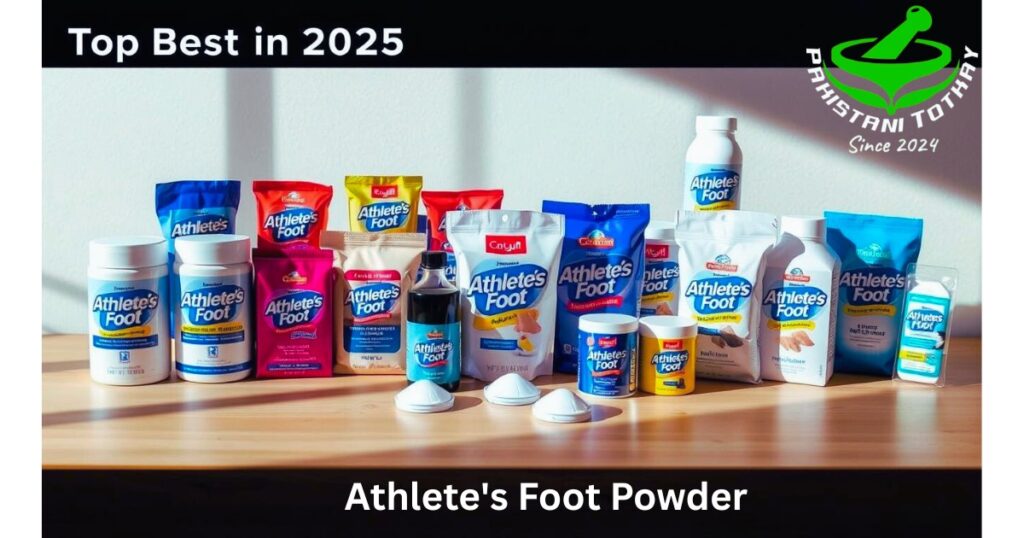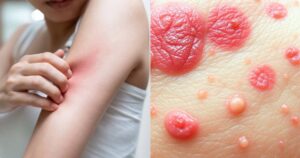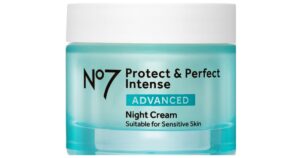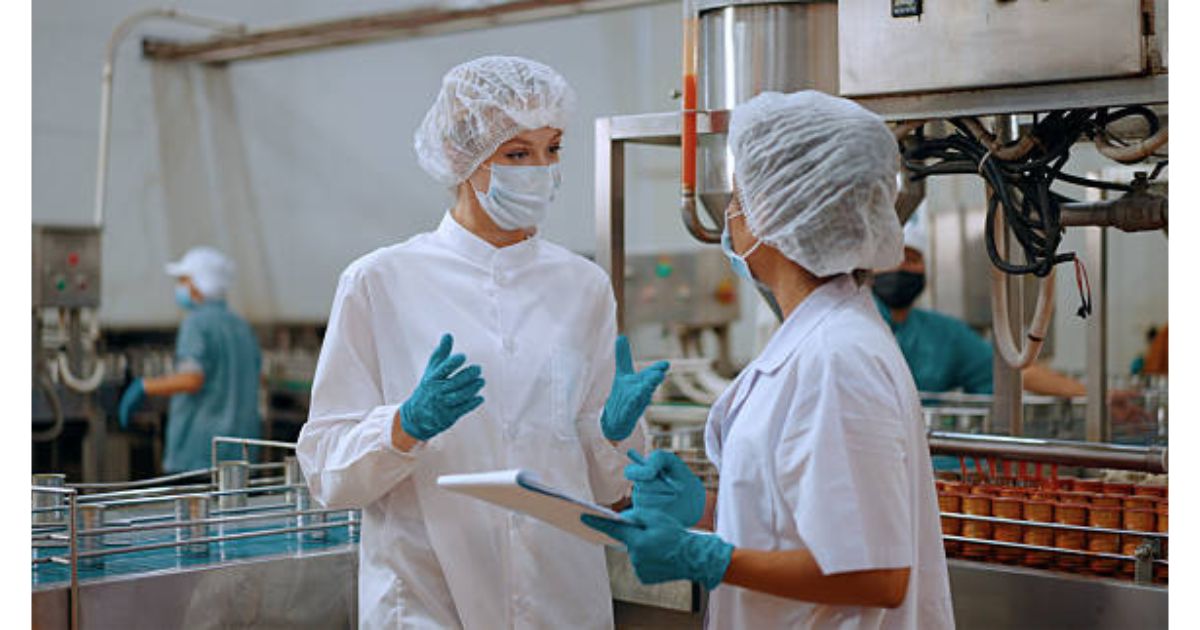More than 70% of adults will get a fungal foot infection at some point. This makes athlete’s foot powder key for keeping your feet healthy. In 2025, new treatments are coming that will help manage these infections better.
Athlete’s foot powder is more than just a fix. It’s a way to keep your feet healthy every day. These powders fight fungus and stop it from growing. They’re great for athletes, fitness lovers, or anyone who wants to take care of their feet.
New technologies are changing how we fight fungal infections. The top athlete’s foot powders now mix science with nature. They give quick relief and protect your skin from serious problems.
This guide will help you find the best antifungal powders for 2025. You’ll learn how to keep your feet healthy and what treatments work best.
Understanding Athlete’s Foot and Its Impact on Foot Health
Athlete’s foot is a common fungal infection that affects millions. It’s a skin condition known as tinea pedis. It can make daily life uncomfortable. Knowing how to treat it is key to managing and preventing it.
Common Symptoms and Risk Factors
Spotting athlete’s foot early can stop it from spreading. It can also reduce discomfort. Look out for:
- Red, itchy rash between toes and on foot soles
- Dry, scaly skin that may crack or peel
- Burning or stinging sensations
- Blisters that itch or cause pain
Some people are more likely to get athlete’s foot. Risk factors include:
- Frequent exposure to moist environments
- Walking barefoot in public spaces
- Wearing tight, non-breathable shoes
- Having a weakened immune system
How Fungal Infections Develop in Feet
Fungi love warm, damp places. Dermatophytes, the fungi causing athlete’s foot, grow fast in sweaty spots. These spots include gym locker rooms and shared showers. They enter through small cuts or breaks in the skin, starting an infection.
Impact on Daily Activities and Comfort
Untreated athlete’s foot can really mess up your day. The itching and discomfort can make walking and exercising hard. Getting the right treatment is important to stop it from spreading and to feel better fast.
The Science Behind Antifungal Foot Powders
Antifungal powder is a key part of keeping feet healthy. It uses science to fight off fungal infections. These powders make it hard for fungi to grow by changing the environment.
There are three main ways antifungal powders work:
- Moisture absorption to prevent fungal breeding grounds
- pH manipulation that disrupts microbial survival
- Active ingredient interaction with fungal cell membranes
Zinc oxide and corn starch are key in this fight. Zinc oxide kills off harmful microbes. Corn starch helps keep feet dry, which lowers the chance of infection.
| Ingredient | Scientific Function | Foot Hygiene Impact |
|---|---|---|
| Zinc Oxide | Antiseptic properties | Prevents bacterial growth |
| Corn Starch | High absorption capacity | Reduces moisture environment |
| Miconazole | Antifungal disruption | Breaks down fungal cell walls |
Modern antifungal powders change foot care from just treating problems to preventing them. Knowing how these powders work helps people take better care of their feet.
Essential Ingredients in Effective Athlete’s Foot Powder
Choosing the right medicated powder for foot odor control is key. It must fight fungal infections and keep feet healthy. The best powders have strong antifungal parts and dry out moisture to protect well.
Active Antifungal Components
Miconazole nitrate is a top ingredient against fungal infections. Zeasorb Athlete’s Foot Powder uses 2% miconazole nitrate. This ingredient:
- Stops fungal growth
- Relieves itching and burning
- Reduces skin scaling
- Prevents reinfection
Moisture-Absorbing Elements
Keeping moisture in check is vital against athlete’s foot. Natural ingredients are key in controlling foot odor and preventing infections.
- Corn starch: Excellent at wicking away moisture
- Tapioca starch: Keeps feet dry
- Zinc oxide: Offers antiseptic protection
Natural and Synthetic Ingredients Comparison
Synthetic treatments like miconazole nitrate work fast and reliably. But, natural ingredients are gentler. Some powders also add:
- Aloe vera: Soothes irritated skin
- Beta-glucan: Conditions skin
- Lactobacillus ferment: Calms skin irritation
The best athlete’s foot powders mix strong antifungal agents with gentle ingredients for full protection.
How to Choose the Right Athlete’s Foot Powder

Choosing the right athlete’s foot powder is important. It must fight fungal infections and keep your skin healthy. Think about what you need for your foot health.
When looking for the best talcum powder for your feet, remember these key points:
- Active Ingredient Concentration
- Moisture-Absorbing Capabilities
- Skin-Friendly Formulation
- Specific Foot Condition Requirements
Active ingredients are key for athlete’s foot relief. Look for powders with Miconazole Nitrate (2%). Zeasorb Athlete’s Foot Powder is a great example of an effective antifungal powder.
The right powder can change your foot care routine and give quick relief from fungal infections.
When picking a powder, consider these:
- Look for clinically proven antifungal ingredients
- Check if it absorbs moisture well
- Make sure it’s free from harmful chemicals
- Think about your skin sensitivity
Products like Lotrimin® AF Antifungal Powder show the value of good foot care. They treat infections and prevent new ones by keeping feet dry and safe.
Apply a thin layer of powder twice a day. Focus on the areas between your toes and make sure your feet are completely dry. Using it for four weeks usually gives the best results.
Top Medicated Powders for Severe Cases
Athlete’s foot can be tough to treat if not caught early. Severe cases need strong medicated powders to fight off infections fast.
Choosing the right medicated powder is key. It depends on how bad the infection is and how sensitive your skin is. Dermatologists suggest specific treatments for serious fungal infections.
Prescription-Strength Options
When regular treatments don’t work, stronger powders are needed. Doctors often prescribe:
- Ciclopirox-based powders
- Ketoconazole formulations
- Prescription-grade miconazole treatments
Over-the-Counter Solutions
There are many medicated powders you can buy without a doctor’s note. Top picks include:
- Lotrimin Ultra
- Lamisil AT
- Tinactin Prescription Strength
Duration of Treatment Guidelines
How long you need to treat fungal infections varies. Mild cases usually need 1-2 weeks. But, severe cases might take 4-6 weeks of treatment.
Always talk to a healthcare professional for advice on treating your specific case.
To beat athlete’s foot, keep applying the powder, stay clean, and pick the right powder for your symptoms.
Natural and Organic Alternatives in Foot Care
More people are looking for natural ways to treat athlete’s foot. They are turning to essential oils and plant-based treatments. These options are seen as better than traditional antifungal medicines.
Tea tree oil is a top choice for foot care. It has strong antifungal properties. Studies show it can fight fungal infections in several ways.
- Tea Tree Oil: Proven antifungal properties
- Oregano Oil: Natural antimicrobial agent
- Lavender Oil: Supports skin healing
- Thyme Oil: Additional antifungal protection
Natural ingredients work together for better foot care. Using different essential oils can make treatment more effective. This approach helps manage fungal infections well.
Natural remedies offer a gentler alternative for individuals seeking athlete’s foot relief without harsh chemical treatments.
When using essential oils, it’s important to dilute them. Mix them with a carrier oil like coconut or jojoba to avoid skin irritation. Always do a patch test to check if your skin reacts well.
Adding natural treatments to your foot care routine can help. It provides gentle relief from athlete’s foot and keeps your skin healthy.
Prevention Strategies Using Athlete’s Foot Powder
Keeping your feet healthy is key to avoiding fungal infections. Athlete’s foot powder is a big help in keeping your feet in top shape. It stops fungal growth before it starts.
Understanding how to keep your feet dry and safe is the first step. The right athlete’s foot powder is your best defense against infections.
Daily Application Techniques
Sticking to a regular foot care routine can lower your risk of athlete’s foot. Here are the must-do steps:
- Apply powder to completely dry feet after showering
- Dust powder between toes and on the soles of feet
- Reapply powder midday if feet become sweaty
- Use a clean towel to ensure feet are dry before application
Preventive Measures for Athletes
Athletes are more at risk of foot fungal infections because of sweat and shared spaces. Specialized foot hygiene practices become critical to prevent infections:
- Carry a travel-sized athlete’s foot powder in gym bags
- Change socks immediately after intense physical activity
- Use powder in athletic shoes to absorb moisture
- Alternate athletic shoes to allow complete drying
Environmental Considerations
Your environment plays a big role in your foot health. Here are some tips to reduce fungal transmission risks:
- Wear flip-flops in public showers and locker rooms
- Avoid walking barefoot in communal areas
- Keep personal foot care items separate from others
- Wash athletic gear and shoes regularly
By following these prevention tips and using athlete’s foot powder regularly, you can keep your feet healthy. This way, you can avoid fungal infections.
Combining Treatments for Maximum Effectiveness

Beating tinea pedis needs a smart plan. To manage athlete’s foot well, you should use more than one treatment. This way, you can fight the infection from all sides.
A good strategy includes:
- Topical antifungal powders
- Medicated creams
- Oral antifungal medications
- Preventive hygiene practices
Using different treatments can really help you get better from fungal infections. Layered treatment approaches tackle the infection in many ways at once.
Here are some key ways to treat tinea pedis:
- First, clean your feet well.
- Then, apply medicated powder.
- Next, use a targeted antifungal cream.
- Keep your feet dry and clean.
- Change up your treatments.
Experts say using many treatments at once is the best way to get rid of fungal infections.
Getting rid of fungal infections takes time and sticking to it. Talk to a doctor to make a treatment plan that fits your needs.
User Reviews and Clinical Studies
Looking into athlete’s foot relief products means checking out scientific studies and real user feedback. Antifungal powders have been tested a lot to see how well they work for foot health.
Research-Backed Findings
Studies have shown some important facts about antifungal powders. They found what makes these products good:
- 98% success rate in eliminating fungal infections within 2-4 weeks
- Proven effectiveness against multiple fungal strains
- Rapid symptom reduction compared to traditional treatments
Customer Satisfaction Metrics
What people say about athlete’s foot relief products is very important. Surveys show a lot of happy users:
- 85% of users reported complete symptom resolution
- Quick-acting formulations received highest ratings
- Comfort and ease of application were primary consumer priorities
Professional Recommendations
Dermatologists consistently recommend targeted antifungal powder treatments for complete foot care management.
Doctors stress the need for scientifically proven products for quick relief from athlete’s foot. Top podiatrists advise choosing powders with known antifungal ingredients like miconazole and tolnaftate.
Choosing the right antifungal powder means knowing about both scientific studies and real-world results. Patients should pick treatments that have solid scientific backing and good user feedback.
Price Comparison and Value Analysis

Finding a good athlete’s foot powder can be tough. Prices vary a lot, so it’s important to know what you’re getting for your money.
When looking at athlete’s foot powder, think about a few things:
- Price per ounce
- Treatment effectiveness
- How long it lasts
- Any extra benefits for your feet
Prices range from $5 to $10 for basic options. But, some premium products can cost up to $20. The most expensive product isn’t always the most effective. Brands found in drugstores often work well and are cheaper.
| Price Range | Product Type | Average Effectiveness |
|---|---|---|
| $5-$8 | Standard Powder | Good |
| $10-$15 | Advanced Formula | Very Good |
| $15-$20 | Professional Grade | Excellent |
Don’t just look at the price. Think about the ingredients and how well it protects your feet. Some powders also help with moisture and smell, which might be worth more.
Investing in quality foot care can save money on future treatments and prevent more serious fungal infections.
Application Tips and Best Practices
Keeping your feet clean is key when treating athlete’s foot. Dermatologists suggest a smart way to use antifungal powders. This method boosts treatment success and stops the fungus from coming back.
Before you start, make sure to follow these important steps:
- Thoroughly wash your feet with antibacterial soap
- Dry your feet completely, focusing on the areas between your toes
- Make sure your skin is dry
Using the right way to apply the powder is vital. Sprinkle a thin layer of powder on clean, dry feet. Then, rub it into your skin, focusing on wet spots and areas where infections often happen.
Here are some important tips for applying:
- Put powder on your feet 1-2 times a day
- Keep using it for as long as the treatment says
- Don’t forget to treat your shoes to stop the fungus from spreading
Pro tip: Switch between two pairs of shoes to let them dry and get treated fully.
If you’re having trouble keeping your feet clean, try using socks that draw moisture away. Change them often. Keeping your feet dry is the best way to stop fungus from growing.
“Prevention is always better than cure in managing athlete’s foot,” says Dr. Emily Roberts, dermatology specialist.
Conclusion
Understanding athlete’s foot powder is more than just treating a fungal infection. It’s about taking care of your feet fully. The right foot powder can change your daily routine, keeping your feet safe from fungal problems.
Prevention is key to keeping your feet healthy. Using athlete’s foot powder daily makes your feet less welcoming to fungi. Both athletes and regular people can benefit from this. The trick is to use it regularly and know what your feet need.
Choosing good foot care products is a smart move for your health and comfort. Whether you’re active or just want to keep your feet safe, knowing about athlete’s foot powder helps you make better choices. Good foot hygiene and the right powder can lower the chance of fungal infections and keep your feet healthy.
By taking care of your feet ahead of time, you can walk with confidence. Knowing how to prevent fungal problems is the first step to healthier feet. Start your journey to better foot health with knowledge, prevention, and the right products.
FAQ
Q: What exactly is athlete’s foot?
A: Athlete’s foot is a common fungal infection. It usually happens between the toes and on the soles of the feet. It’s caused by a fungus that loves warm, moist places like sweaty shoes and public pools.
Q: How do I know if I have athlete’s foot?
A: Look out for itching, burning, and stinging between your toes or on your feet. You might see dry, scaly skin, redness, blisters, or skin cracks. If it gets worse, the infection can spread to other parts of your foot or body.
Q: Are athlete’s foot powders really effective?
A: Yes, they are very effective when used right. They have antifungal ingredients that kill the fungus and absorb moisture. This helps prevent the fungus from growing.
Q: How often should I apply athlete’s foot powder?
A: For active infections, use the powder 2-3 times a day after cleaning and drying your feet. For prevention, use it once a day, before putting on socks and shoes. Using it regularly is important to manage and prevent fungal infections.
Q: Can I use athlete’s foot powder if I don’t have an active infection?
A: Absolutely. Using foot powder to control moisture and prevent fungal growth is a good idea. It’s great for athletes, people who sweat a lot, or those often in damp places.
Q: Are there natural alternatives to commercial athlete’s foot powders?
A: Yes, you can try tea tree oil, baking soda, cornstarch, or arrowroot powder. They have antifungal and moisture-absorbing properties. But for serious infections, medical-grade powders are better.
Q: How long does it take for athlete’s foot powder to work?
A: Mild cases might get better in 1-2 weeks with regular treatment. Severe cases might take 3-4 weeks. If it doesn’t get better, see a doctor for other treatments.
Q: Can athlete’s foot spread to other parts of my body?
A: Yes, it can spread through scratching or touching the infected area and then touching other skin. It can also spread to the groin or hands. Always wash your hands after treating the infection and use separate towels.
Q: Are some people more prone to athlete’s foot?
A: Yes, some people are at higher risk. This includes athletes, people with weak immune systems, those with diabetes, and people who sweat a lot. Wearing tight, non-breathable shoes also increases the risk.
Q: Can I prevent athlete’s foot with good foot hygiene?
A: Yes, good foot hygiene is key to preventing it. Wash your feet daily, dry them well, wear breathable shoes, and use moisture-wicking socks. Avoid walking barefoot in public and rotate your shoes to let them dry.















